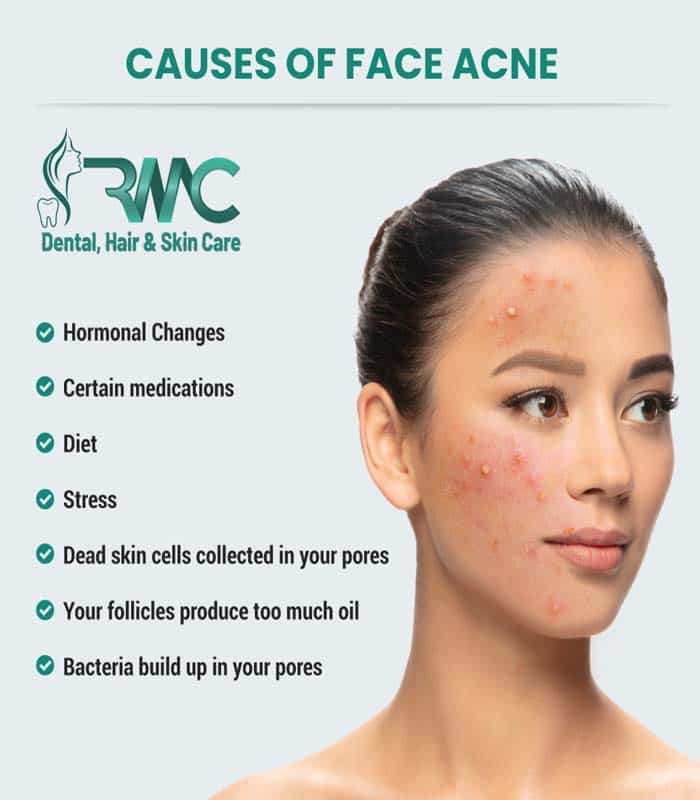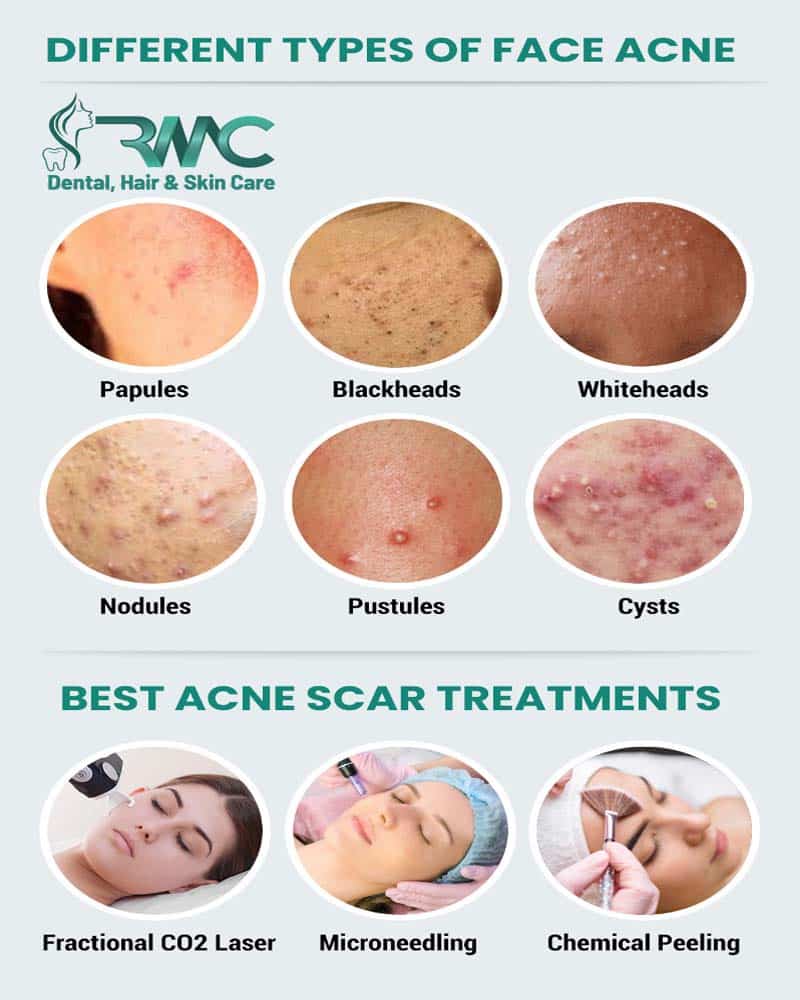How to Get Rid of Acne Scars? Know Now
You are not alone if you have acne! The most typical skin problem worldwide is acne. Between the ages of 11 and 30, 80% of people will be affected. Because of their fluctuating hormones, teenagers develop acne. Hormones can affect adults, but other factors, including stress, menstrual cycles, the environment, birth control medications, and oil-based products, are also the reasons for acne.
Acne vulgaris is the most common skin condition. The scars and marks that the breakouts leave behind need to be treated.
Scars from acne are particularly common on the face, chest, and back. Around 80% of people will experience acne, and one in five will develop scars. The scars impact confidence and self-esteem. However, luckily, acne scars can be treated.
Acne scars and acne marks are two distinct conditions requiring two different treatment approaches. In addition, the procedure varies from skin to skin. Plus, clearing up acne before starting any treatment would be best because further breakouts can result in more scarring.
Do you want to know more about it?
So, start reading this blog to learn everything there is to know about it.

What Causes Acne?
When bacteria, oils, and dead skin cells clog and inflame pores, the microscopic openings in your skin through which sweat and oil rise to the surface, an acne lesion (pimple) develops. Your skin sheds 40,000 cells per hour, yet occasionally one of those dead cells gets stuck in a pore.</p >
“Whiteheads or blackheads” can occur when tiny pores become clogged. Other forms of acne can occasionally result from these irritated pores.
For instance, acne may develop when:
- Dead skin cells and germs collect in your pores
- Your follicles produce too much oil
- Bacteria build up in your pores
Any of these issues may result in pimples, which develop when oil-expelling pores get blocked by bacteria due to closed pores.
What Are The Different Types of Acne?
Acne comes in a variety of shapes and sizes. However, blackheads and whiteheads are common, and they typically cure without much trouble. The types of acne that can leave scars are the following:
| Types of Acne | Description |
| Nodules | These solid, frequently uncomfortable lumps grow below the skin’s surface. |
| Papules | Inflamed or diseased hair follicles are the main sources of these tiny, red, raised pimples. |
| Cysts | Cysts are located deep within the skin. They are pussy, and are almost certainly going to leave scars. |
| Pustules | Pus is present at the tips of these little red pimples. |
What Factors Cause Scars From Acne?
Your largest organ is your skin. There are three major layers. The epidermis, dermis, and hypodermis are those layers. As a result of sunshine, the layers help manufacture vitamin D and shield your body’s delicate interiors from the weather, UV rays, and bacteria.
Acne scars are the result of inflammation of acne blemishes. The pore wall breaks down and swells as a result of the acne. Some acne blemishes are tiny, and the resulting scars are shallow and quick to heal. Blemishes occasionally leak their contents into the surrounding tissue, leaving deeper scarring. In order to treat the scar, the skin produces new collagen fibers.
There are two primary types of acne scars: those that are elevated on the skin’s surface or those that grow when tissue is lost, leaving an indentation in the skin’s surface. In fact, this particular type of acne scar indicates that your skin may be functioning too effectively. To aid in the healing of the wound caused by the acne, your skin produces collagen (also known as “repair tissue”), but if it produces too much, elevated scars result.
Remember that having acne does not guarantee that you will get scars. Although one in five people who have acne will also have scarring, the good news is that not all scars are permanent. There are treatments available. Some treatments completely eliminate the scars, while others encourage the skin’s natural collagen to repair itself.
What Kinds of Acne Scars Are There, And How Do They Appear?
You may have more than one of the following types of acne scars if you have acne. Very few people only have keloid scars, boxcar scars, etc. These can all be handled but with varying degrees of effectiveness.
The most common types of acne scars are;
-
Boxcar
When certain types of acne heal, your skin will be left with a round or oval depression known as a boxcar scar. However, some boxcar scars are the same color as the skin around them, while others can seem red or dark brown.
Boxcar scars are atrophic, which simply means that after healing, the skin doesn’t regain its prior state. Lower checks and the jaw frequently have these scars.
-
Ice pick
As a result of the acne healing process, ice-pick scars are a typical type of scarring that can develop. They resemble tiny, pointed indentations that are larger on the skin’s surface and become smaller and pointier as they go deeper into the skin. They are located where your skin is thinner, on your forehead and upper cheeks.
-
Rolling
You’ll usually notice these scars on your lower cheeks and jaw, where your skin is thicker. The skin appears uneven and wavelike due to the indents’ sloping edges.
-
Keloid
Keloid scars are elevated, enlarged scars that might be pink, red, flesh-colored, or even darker than the surrounding skin. They may develop beyond the initial area of skin damage and may arise after relatively little skin damage, such as an acne scar or a piercing.

What are the Best Acne Scar Treatments in Islamabad?
In Islamabad, there are many ways to heal acne scars. For the benefit of our customers, the Rehman Medical Center uses the latest technology. Some of them are listed below;
-
Fractional CO2 Laser
Fractional CO2 laser therapy is a popular and effective method of treating acne marks. This procedure’s primary goal is the reduction of wrinkles, age spots, fine lines, acne scars, and other skin abnormalities.
This non-invasive laser uses carbon dioxide to remove the skin’s outer damaged layer. This technique can be performed on your face, neck, arms, and legs. The fractional CO2 laser’s outcomes also depend on the aftercare.
The main negative effect of this treatment is redness, which can go after a few days of treatment. This procedure takes 10 to 15 minutes to complete. People with active acne and open wounds should not use fractional CO2.
-
Microneedling
A highly straightforward, safe, efficient, and minimally invasive treatment is microneedling. Although it was primarily developed for skin renewal, it is currently utilized for various indications, including acne scarring, stretch marks, hyperhidrosis, burn scarring, post-traumatic scarring, and alopecia.
-
Peel Off
Scars, discolored skin, and wrinkles are all commonly treated with peel Off. They can be carried out independently or alongside other cosmetic operations. They can also be carried out at various depths, ranging from light to deep. Deeper peels produce more dramatic effects but require more time to heal.
Now, you get to know that acne scars treatments are available. So, stop worrying and consult an expert dermatologist.
Dermatologists can diagnose skin conditions simply by a visual examination. How extensive your acne scarring is could also be decided by your dermatologist. So, you should consult the best dermatologist in Islamabad.

